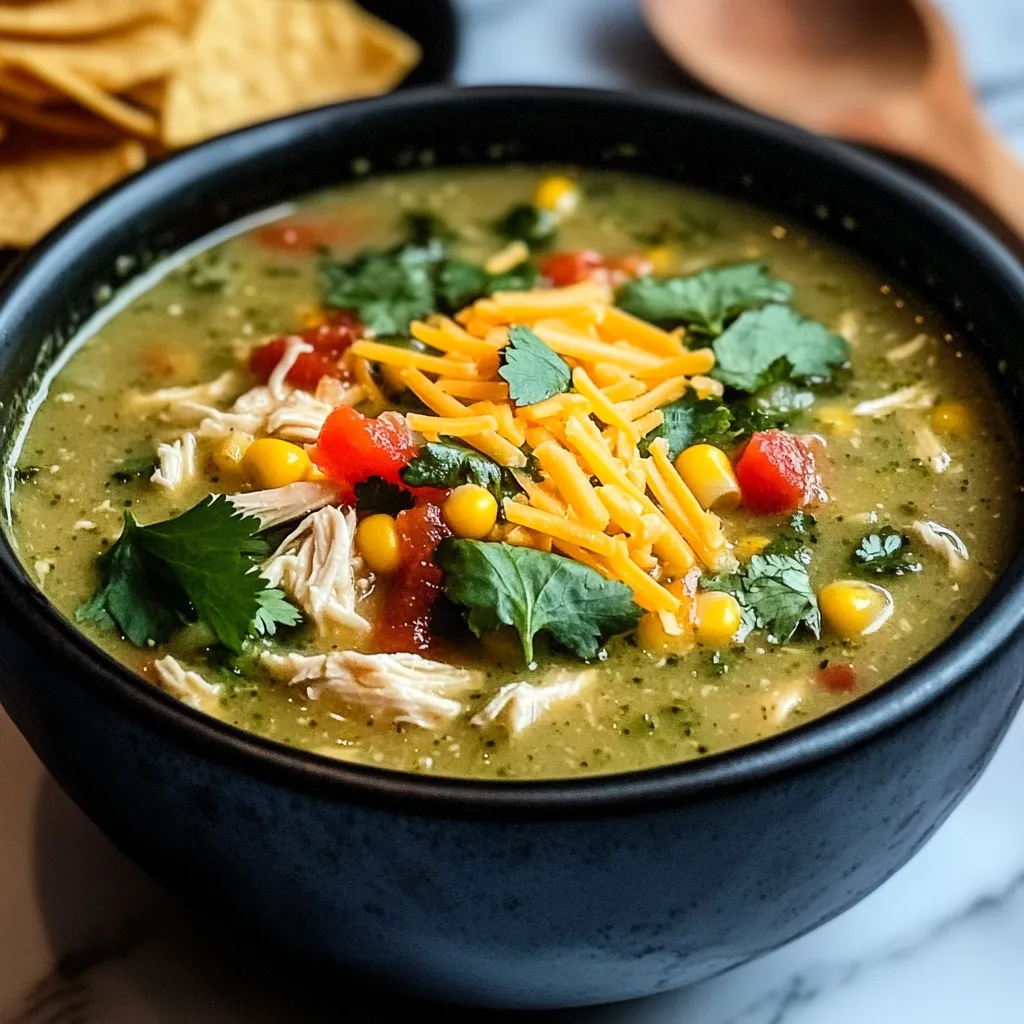Greek cuisine is celebrated worldwide for its vibrant flavors and healthy ingredients. Central to this culinary tradition is the gyro, a beloved fast food delight that has its roots deep in Greek history. This dish exemplifies the Greek ethos of simple yet flavorful food, made from high-quality, fresh ingredients. Whether you’re dining in a bustling Athens eatery or a quaint seaside taverna, the gyro is a go-to choice that promises both satisfaction and a taste of Greek culture.
The gyro (pronounced ‘yee-roh’) is a versatile and popular dish that features rotisserie-cooked meat, often served wrapped in a soft pita with an array of accompaniments like tomato, onion, and a generous dollop of tzatziki sauce. This dish is not only a staple street food but also a testament to the Greek way of communal eating and enjoyment. Its preparation might seem simple, but the flavors are rich and complex, much like the history of Greece itself.
Discovering the origin of the gyro is like taking a journey back in time. This dish’s history shows its evolution from a humble snack to a global sensation, highlighting its integral role in Greek fast food culture. By exploring recipes like the Greek Chicken Gyros, you can bring a piece of Greece into your kitchen. Here’s a step-by-step guide to creating authentic Greek Chicken Gyros, complete with homemade tzatziki that will transport you straight to the sun-drenched Mediterranean.
What is a Gyro?
A gyro is a traditional Greek dish made from meat cooked on a vertical rotisserie, similar to the doner kebabs of Turkey and the shawarma of the Middle East. The name “gyro” comes from the Greek word for “turn,” alluding to the turning of the spit upon which the meat cooks. Traditionally, the meats used include lamb, beef, or pork; however, chicken has become increasingly popular for its leaner and milder flavor profile.
In its classic form, the gyro is served wrapped in a warm pita bread with a variety of toppings:
- Tomato: Freshly sliced for a juicy crunch.
- Onion: Thinly sliced to add a sharp bite.
- Tzatziki Sauce: A cool and creamy sauce made from yogurt, cucumber, and garlic, adding a refreshing contrast to the savory meat.
Sometimes, other elements like lettuce, fries, or feta cheese are added, creating a hearty meal that is both fulfilling and flavorful. The pita acts not only as a holder but also melds the flavors together, making each bite perfectly balanced.
The vertical cooking method is key, allowing the meat to be evenly roasted while retaining its juiciness. This technique is celebrated for how it can turn simple ingredients into a meal with a complex array of textures and flavors. As you explore the different types of traditional gyros, you’ll find that while the basic components remain consistent, regional variations can offer a new dimension to this classic dish. Cooking a gyro at home might seem challenging, but with the right equipment, you can recreate this Greek favorite. For those looking to try this at home, consider these DIY vertical spit ideas to make your gyro making experience authentic and enjoyable.
Authentic Ingredients and Preparations
To create an authentic Greek Chicken Gyro, you’ll need a selection of fresh and flavorful ingredients. Here’s what you’ll typically include:
- Chicken: Opt for boneless skinless chicken thighs for maximum flavor and juiciness.
- Olive Oil: A staple in Greek cooking, use high-quality extra virgin olive oil for marinating and cooking.
- Lemon Juice: Freshly squeezed lemon juice adds a tangy brightness that penetrates the chicken.
- Garlic: Minced for a pungent kick that’s quintessential in Greek marinades.
- Oregano and Thyme: These dried herbs bring the classic Mediterranean flavors to the forefront.
- Paprika: Adds a subtle warmth and depth to the marinade.
- Salt and Pepper: Essential for seasoning and bringing out the natural flavors of the other ingredients.
Marinating the chicken is crucial as it infuses the meat with flavor and ensures it stays moist and tender during cooking. Combine the olive oil, lemon juice, minced garlic, oregano, thyme, paprika, salt, and pepper in a mixing bowl. Add the chicken thighs and ensure they are well-coated with the marinade. For the best results, marinate in the refrigerator for at least two hours, or overnight if time allows.
Once marinated, the chicken can be cooked on a traditional vertical spit that rotates to cook the meat evenly and achieve the characteristic outer crispiness while remaining succulent inside. If you don’t have a vertical spit, you can use a grill or a broiler to get a similar effect. Ensure the chicken is thoroughly cooked to a safe internal temperature and that it develops a slightly charred exterior for that authentic street-food experience.
Here are some tips for preparation:
- Using a Spit: If you have access to a vertical spit, layer the chicken thighs tightly and cook over medium heat. This method is closest to the traditional gyro preparation and provides the best flavor and texture.
- Grill or Broiler Method: Arrange the marinated chicken on a preheated grill or broiler pan. Cook, turning occasionally, until the chicken is golden brown and fully cooked.
To assemble the gyro, slice the cooked chicken into thin strips. Serve on warmed pita bread with tzatziki sauce, sliced tomatoes, onions, and your choice of additional toppings like cucumber or lettuce. Wrap tightly and serve immediately to enjoy the full spectrum of flavors and textures.
The process of preparing a Greek Chicken Gyro at home can be a delightful way to explore Greek culinary traditions and enjoy a meal that is both delicious and satisfying. Whether you’re cooking for family or friends, these gyros are sure to impress. For additional ideas on how to serve your gyros, consider checking out these creative Greek salad combinations which make perfect sides to your meal.
Homemade Tzatziki Sauce
The perfect gyro is incomplete without a generous helping of tzatziki, a refreshing and creamy sauce that balances the savory flavors of the meat. Making tzatziki at home is straightforward and allows for customization to your taste preferences. Here are the essential ingredients you’ll need:
- Greek Yogurt: Thick and creamy, it forms the base of the sauce.
- Cucumber: Grated and squeezed to remove excess moisture, cucumber adds a fresh, crisp texture.
- Garlic: Minced finely, it infuses the sauce with a sharp depth of flavor.
- Lemon Juice: Brightens the sauce with a touch of acidity.
- Fresh Dill: Chopped for a herby freshness that complements the yogurt and cucumber beautifully.
- Salt and Pepper: To season and enhance all the flavors.
To prepare the tzatziki, start by combining the Greek yogurt with the grated cucumber, minced garlic, lemon juice, and chopped dill in a mixing bowl. Season with salt and pepper to taste. It’s important to let the sauce chill in the refrigerator for at least an hour before serving; this allows the flavors to meld together and the garlic to mellow out, making the tzatziki even more flavorful.
Here’s how you can integrate this sauce into your gyro or use it in other dishes:
- As a Gyro Sauce: Spread a generous amount of tzatziki on the pita bread before adding the chicken and toppings.
- As a Dip: Serve tzatziki as a cooling dip with fresh vegetables or grilled meat.
- As a Salad Dressing: Thin the tzatziki with a little olive oil and additional lemon juice to dress a vibrant Greek salad.
For those looking to explore variations, you might consider adding a pinch of mint for an extra refreshing version or a sprinkle of cumin for a slight smoky undertone. Each addition can create a new layer of complexity in this simple sauce. Dive into the versatility of Greek yogurt in cooking to discover more about its uses and benefits in various dishes.
Tzatziki is more than just a condiment; it’s a showcase of the Greek culinary philosophy that great flavor comes from simple, high-quality ingredients combined with care. As you enjoy your homemade tzatziki, let it transport you to the Greek islands, where food is always about sharing, pleasure, and celebration.
Cooking Techniques and Tips
Creating the perfect Greek Chicken Gyro involves more than just assembling ingredients; it requires mastering a few cooking techniques that ensure your chicken is juicy and flavorful. Here’s how you can achieve the best results whether you’re using a traditional gyro setup or a more accessible home kitchen method.
- Marinating the Chicken: The key to tender, flavorful chicken starts with a good marinade. The combination of olive oil, lemon juice, and herbs not only flavors the chicken but also helps to tenderize it. Make sure to marinate the chicken for at least two hours, though overnight is ideal for deeper flavor penetration.
- Cooking on a Vertical Spit: Traditionally, gyros are cooked on a vertical spit where the meat is stacked in a cone shape and slowly rotated in front of a heat source. This method allows the chicken to cook evenly and stay moist, while the edges get a delicious crispy char. If you have a vertical spit at home, this is the authentic way to cook your gyro meat.
- Alternative Cooking Methods: If you don’t have a vertical spit, you can still make delicious gyros using a grill or oven. For grilling, set your grill to medium-high heat and cook the chicken until it is charred on the outside and fully cooked inside, usually about 7-10 minutes per side. In the oven, roast the chicken at a high temperature (around 425°F or 220°C) to replicate the high heat of a spit.
- Slicing the Meat: Once cooked, the meat should rest for a few minutes before slicing. This allows the juices to redistribute throughout the meat, ensuring that it remains moist when you slice it. Cut the chicken into thin strips to mimic the shaved texture characteristic of gyro meat.
These cooking tips will help you achieve the perfect balance of flavor and texture in your gyros, making them a hit at any meal. To complement the main dish, consider serving your gyros with homemade Greek fries or a simple Greek lemon potato dish, both of which can be found on Pinterest for additional inspiration.
Serving Suggestions
When it comes to serving Greek Chicken Gyros, presentation and pairing can elevate the simple wrap to a delightful meal. Here are some creative and delicious ways to serve your gyros:
- Traditional Pita Wrap: The classic way to serve gyros is wrapped in a soft, warm pita bread. Load the pita with slices of the juicy chicken, a healthy smear of tzatziki, and your chosen toppings like fresh tomatoes, onions, and a sprinkle of paprika for extra flavor.
- Gyro Platter: Serve deconstructed gyros on a platter with chicken, toppings, and sauces on the side. This allows guests to build their own wraps according to their taste preferences.
- Gyro Salad: For a lighter option, toss the gyro ingredients into a salad. Mix sliced gyro chicken with lettuce, tomatoes, cucumbers, onions, and a generous helping of tzatziki as the dressing.
- With Greek Sides: Complement your gyros with traditional Greek side dishes. A simple Greek salad, olives, and some feta cheese offer a refreshing balance to the savory flavors of the gyro.
When presenting gyros, whether as a wrap, platter, or salad, focus on the freshness and quality of ingredients. The vibrant colors and textures not only make the dish more appealing but also enhance the eating experience. Encourage family and friends to explore the different combinations of flavors and textures to fully enjoy the communal aspect of Greek dining.
Incorporating these serving suggestions will ensure your Greek Chicken Gyros are not only delicious but also visually appealing and satisfying in every bite. For those who enjoy a bit of customization, offering a variety of toppings and sauces can make the meal even more interactive and fun.
Nutritional Information
Understanding the nutritional value of Greek Chicken Gyros can help you appreciate not only their taste but also their role in a balanced diet. Here’s a breakdown of the main components and their health benefits:
- Chicken: A high-quality protein source, chicken is also low in fat, especially when using skinless breasts or thighs. It provides essential amino acids that are crucial for muscle repair and growth.
- Yogurt: Used in tzatziki, Greek yogurt is rich in probiotics, which are beneficial for digestive health. It’s also a good source of calcium, protein, and vitamin B-12.
- Cucumbers: Adding a fresh crunch to the tzatziki, cucumbers are low in calories but high in water content and dietary fiber, which helps in hydration and digestion.
- Olive Oil: A key ingredient in the marinade, olive oil is loaded with monounsaturated fats, known for their benefits to heart health and cholesterol levels.
- Herbs and Spices: Ingredients like garlic, oregano, and lemon not only add flavor but also offer various health benefits, including anti-inflammatory and antioxidant properties.
Here’s a quick look at the approximate nutritional content per serving of a standard Greek Chicken Gyro:
- Calories: About 450 kcal
- Protein: 30g
- Carbohydrates: 35g (including the pita and vegetables)
- Fats: 20g (primarily from olive oil and some from the yogurt)
- Fiber: 2g
Offering a good balance of protein, fats, and carbohydrates, Greek Chicken Gyros can be a fulfilling part of a healthy diet. When considering portion sizes, one gyro typically satisfies an adult’s appetite while providing essential nutrients. For those monitoring their caloric intake or dietary specifics, substituting certain ingredients or adjusting portion sizes can make this dish a versatile option in various diet plans.
Embracing the health benefits of each ingredient not only enhances your enjoyment of Greek Chicken Gyros but also contributes to a wholesome lifestyle. For further reading on the health impacts of Mediterranean diet ingredients, this comprehensive overview of Mediterranean herbs is an excellent resource.
Variations and Substitutions
Greek Chicken Gyros are wonderfully versatile, allowing for various substitutions and variations to suit different tastes and dietary needs. Here are some creative ways to customize your gyros:
- Meat Alternatives: While chicken is popular, traditional gyros often feature lamb, beef, or pork. For a vegetarian option, grilled halloumi or marinated tofu can make excellent substitutes without compromising the authentic flavors.
- Marinade Variations: To explore different flavor profiles, you can experiment with adding yogurt or lemon zest to the marinade. Spices such as cumin, coriander, or smoked paprika can also introduce a new dimension to the dish.
- Low-Carb Options: For those watching their carb intake, replacing the pita bread with lettuce wraps provides a crunchy, low-carb alternative that still holds all the delicious gyro fillings.
- Dairy-Free Tzatziki: Use coconut yogurt or a soy-based alternative to make tzatziki dairy-free. This substitution helps accommodate those with lactose intolerance or those following a vegan diet.
- Gluten-Free Adaptations: Opt for gluten-free pitas or serve the gyro mixture over a bed of greens for a gluten-free meal option.
Each of these substitutions not only caters to different dietary needs but also encourages experimentation in the kitchen, allowing you to make the dish your own while still maintaining its Greek essence. Don’t hesitate to mix and match ingredients based on what’s available locally or what suits your dietary preferences.
To get started with these variations, check out these ideas for gyro marinades and toppings on Pinterest, which can inspire you to create a gyro that perfectly suits your taste.
Cultural Significance
The gyro holds a special place in Greek culinary culture, embodying the communal and celebratory spirit of Greek food traditions. Its popularity stretches far beyond the borders of Greece, serving as a delicious ambassador of Greek culture worldwide. Here’s why gyros are more than just a meal:
- A Symbol of Greek Hospitality: In Greece, food is about sharing and community. Gyros, often enjoyed at gatherings, festivals, or casual meals, reflect this ethos beautifully, making everyone feel at home.
- Street Food Icon: Gyros are a quintessential example of Greek street food, combining convenience with flavor. They’re a common sight in markets and roadside stalls, where they’re served quick and hot, perfect for on-the-go eating.
- Adaptability and Resilience: The evolution of the gyro—from its origins in Asia Minor to its current popularity across the globe—mirrors the adaptability and resilience of Greek culture. It has adapted to various culinary tastes and preferences while maintaining its core identity.
These cultural nuances make the gyro a dish that’s cherished not just for its taste but also for its ability to bring people together. Whether you’re enjoying a gyro in a small village in Crete or at a bustling New York food cart, the experience connects you with a piece of Greek heritage.
To explore the rich history of Greek cuisine and its influence on global food culture, consider delving into this detailed account of Greek culinary history. It offers insights into how dishes like the gyro have shaped and been shaped by the people of Greece.
FAQs
When it comes to preparing and enjoying Greek Chicken Gyros, people often have questions about the process and the ingredients. Here are some commonly asked questions with their answers:
- Can I use chicken breast instead of thighs for gyros?
- Yes, chicken breast can be used, but it tends to be drier than thighs. For juicier meat, stick to thighs, or ensure breasts are not overcooked.
- What type of gyro plate is best for cooking at home?
- If you do not have a traditional vertical spit, any heavy-duty baking sheet or cast-iron skillet works well for oven roasting or grilling.
- What alternatives can I use if I don’t have tzatziki sauce?
- A good substitute for tzatziki would be a mixture of plain Greek yogurt with a squeeze of lemon, chopped cucumbers, and a hint of garlic.
- Can I prepare gyros in advance?
- The chicken can be marinated and cooked in advance. Assemble the gyros just before serving to maintain the freshness of the pita and vegetables.
- How can I make my gyros more authentic?
- Use fresh ingredients, follow traditional recipes for marinades and tzatziki, and consider adding fries inside the wrap, which is popular in Greece.
- Are there any tips for those making gyros for the first time?
- Keep ingredients fresh, do not skimp on marinating time, and ensure your cooking equipment is suitable for the task to replicate the authentic gyro cooking style.
These FAQs should help clarify any doubts and enhance your gyro-making experience, making it easier and more enjoyable. For more detailed cooking tips and suggestions, exploring resources like The Mediterranean Dish can provide additional insights and recipes tailored to creating perfect gyros at home.
Print
Greek Chicken Gyros with Homemade Tzatziki Sauce
- Author: Naomi
- Total Time: 2 hours 30 minutes
- Yield: 6 servings
Description
Experience the authentic taste of Greece with this Greek Chicken Gyros recipe, featuring succulent marinated chicken wrapped in a soft pita with fresh vegetables and a creamy homemade tzatziki sauce. This dish is perfect for a quick dinner or a festive gathering, offering a delicious combination of flavors that are both refreshing and satisfying.
Ingredients
Instructions
Notes
- Marinating Time: Allowing the chicken to marinate overnight will enhance the flavors significantly, making the chicken more tender and juicy.
- Grilling Alternatives: If you don’t have access to a grill, the chicken can also be cooked in a skillet or under the broiler.
- Serving Suggestions: Pair the gyros with a side of Greek salad or garlic fries for a complete meal.
- Storage: Leftover cooked chicken can be stored in the refrigerator for up to 3 days and used for quick wraps or salads.
- Prep Time: 2 hours 20 minutes
- Cook Time: 10 minutes
- Category: Chicken
- Cuisine: Greek
Nutrition
- Calories: Approximately 450 kcal per serving









